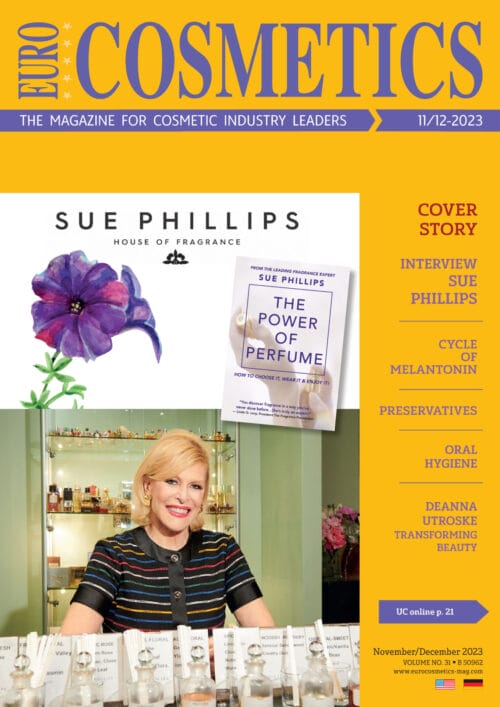
Before a cosmetic product can be offered on the market, its manufacturer has to prove its safety and to substantiate the various claims on the products, e.g. the facial cream improves elasticity after 6 weeks of use or the body lotion improves the skin barrier. Usually the manufacturers of cosmetics forward their products for the final testing to contract research organisations (CROs) that perform all the required testing and compile the final documentation.
Such testing is expensive and takes time. The manufacturers cannot be sure that their products fulfil their intended purpose until those tests have been done. To be sure that the product will pass its requirements, in-house tests done with easy-to-use skin measurement equipment can offer useful information during its development. This way, you will get a clear idea on the performance of your formulation in all stages of development.
It is very easy to conduct such in-house tests in your own facilities. First devices for the measurement of skin entered the market for dermatological and cosmetic research in the 1980s. They enabled the scientists to gain objective insights into skin properties, such as its hydration status, sebum production, elasticity & firmness, colour and many more. For the first time, it was possible to compare the results of different treatments and evaluate products at different testing centres, using identical methods.

The measurement techniques for this purpose are usually fitted into probes that just need to touch the skin to measure different parameters. Images taken from the skin with high-resolution cameras can be calculated to gain additional information on the skin surface.

You need not be an expert to use such skin measurement devices. Still, the skin is not an inanimate fabric like the cloth of a jacket or a trouser. It is a living organ, in constant exchange with the inside of the body and the environment.
Therefore, you have to work out a defined protocol, including the selection of the suitable measuring methods, ideal testing subjects and skin sites, the preparation of the skin prior to the measurement, the testing type, maintenance of standard ambient conditions, performance of the measurements, product application procedures and many more. For good comparability of the measurements you should try to standardize as many factors as possible. Numerous product studies have been published and can serve as a landmark for your own study design. You will also find publications on general advice for skin testing that can assist in establishing your own testing protocol.1, 2
Before starting the measurements for your trial, you have to consider some crucial points:
Which measurements will be relevant to substantiate the intended claim? Many devices offer the advantage of modular functions, combining different measuring probes. With the choice between several basic measurement parameters, you will be able to combine the measurements that will most precisely proof the intended product claim. Such modular systems enable you to work with all probes together in one program.
You might also like to compare your testing results to results that have already been published on other products. To have this possibility, you should pick standard devices that have already been used in similar studies or are covered by specific guidelines, such as the revised EEMCO guidance for the in vivo measurement of water in the skin.3 Please also heed the manufacturer’s specifications on regular calibration of the equipment.
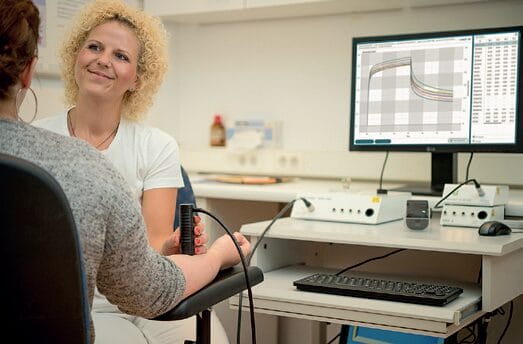
You should consider the necessity of randomization, blind and double-blind studies. Especially in modern times of increased data privacy, you also have to ensure that the subject data cannot be externally accessed.
A special room for the testing has to be furnished. Ideally, close-by you should provide a waiting area for acclimatization and preparation of the subjects. The testing room should be quiet and intimate with no disturbances from people passing by or from machinery causing noise or air turbulences. Since ambient temperature and humidity will have an impact on the results, you must also consider air conditioning to measure always at the same room conditions. Ideally, you perform the measurements in a temperate room at 20–22°C and a relative humidity of 40–60%.
To accustom to these conditions, at least 20–30 minutes prior to the start of the measurements, the subjects should undergo an acclimatization period at the very same conditions. During this acclimatization time, any physical exercise, mental stress or excitement have to be avoided. Exceptions are of course if you want to study effects of physical or mental stress on the skin.
In temperate climate zones, there is a pronounced difference between the seasons that will also influence the skin condition. Dry air from heating in winter or air conditioning in summer will stress and dry out the skin. Frequent alternation between cold and warm environments are not only challenging for general health but also for the skin. For reliable results, you should compare data taken during the same season. In hot summers, the temperature may even be too high to carry out any tests due to unavoidable sweating or the impossibility to keep the temperature within the measurement room at the designated standard conditions.
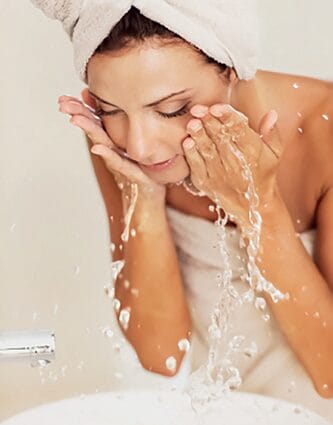
Even the time of day may influence the measurement results. In the same way as other physiological reactions, skin conditions also follow certain circadian rhythms that have been subject of numerous studies.4, 5, 6, 7 For comparable results, you should always measure your subjects at approximately the same time of day. Please also keep an untreated control area for comparison at all times.
You should also consider subject-related differences. Many skin parameters are depending on age, gender, the ethnic group and the body site that is measured. Individual health and the intake of medication may influence skin condition and functions, same as personal behaviour and health consciousness, for example healthy nutrition versus junk food, smoking, alcohol, drinking (water), sleeping, excessive sunbathing etc.
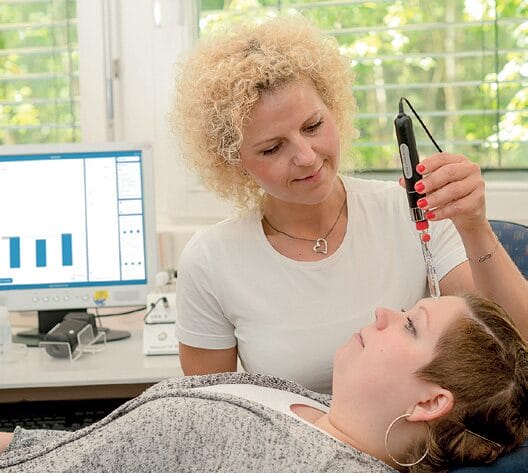
If you want to see meaningful results, you have to carefully choose your subjects. You will not be able to prove anti-aging effects by measuring the skin of a 25 year old. And it is almost impossible to improve the hydration of skin that is already well-moisturized. Instead, you would rather measure on a subject in an age group where elasticity is distinctly decreased or on persons with dry skin condition. Ideally, you prepare a subject database that will take into account all subject-related information and can be filtered according to certain parameters to find the ideal subjects for different claims. To judge their eligibility for the desired claim, you might also use the measuring equipment for pre-screening potential subjects. For a pilot study to find a general trend about the product efficacy, twelve subjects could be sufficient. For final product application studies, you should have at least 20 subjects.
It is also important to consider how long the product will take to show an effect. For moisturizing claims, you will see an immediate increase of hydration after product application. Measuring the skin at certain time intervals, for example every hour can show how long this moisturizing effect will last. Always include an untreated control site. If you would like to prove that the product improves skin hydration in the long term, the subject has to use this product over a predetermined time such as two to three weeks according to a detailed protocol (e.g. when to use the product and how much of it, how to cleanse the skin, etc.), and after this time needs to come back for further skin measurements. For the follow-up measurement day, the product should not be applied. If you find a distinct increase of moisturization, this will prove that the product fulfils the desired claim. A similar protocol could be applied for the measurement of skin barrier improvement, skin pH or other parameters.
Other product effects, such as an increase of skin elasticity or a decrease of the depth of wrinkles will often take longer to show. In that case, the product has to be used for at least six to eight weeks to show a marked difference.
Skin cleansing prior to the measurement also needs to be standardized. Especially sebum will take up to two or three hours to recover after the skin has been thoroughly cleansed. Therefore, the cleansing procedure should be clearly defined, including the means and the timing of cleansing.
At least 10 minutes prior to the measurement, all kinds of clothes or covers have to be removed from the measuring site. This way, the skin has time to recover from the occlusion and heat accumulation underneath the fabrics. If you are interested in sebum measurement in areas hidden by clothing, the clothing should already be removed at the time of cleansing in order not to absorb any sebum that has developed at this area.
The amount of product and method of application should be defined in advance and also clearly explained to the testing subject for long-term use.
Finally, after collecting all the results, the data should be evaluated in a meaningful and plausible way.
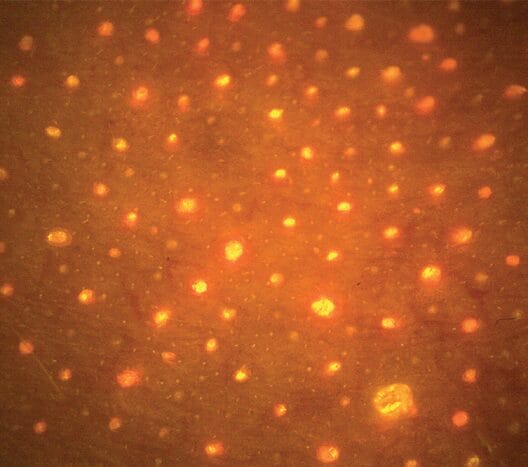
To observe all these points might seem complicated at first glance. But once you have established a routine, you will see how easy these trials will become.
When the basic requirements are cleared, a wide array of instruments, also for hair – and even nail parameters are at your disposal. These devices are easy to use and very economical in costs. They allow a quick and easy screening of a cosmetic product in all phases of the development.
If you want to start in-house efficacy testing, a typical basic set of parameters will consist of the following probes/devices:
- Measurement of skin hydration – since the moisture content of the skin surface is important for almost all cosmetic products.
- Determination of the Transepidermal Waterloss (TEWL): the evaporation rate from the skin is an indicator for the quality of its barrier function and as such a basic measurement in product safety and tolerance. Any topically applied product should at least maintain the barrier quality or even improve it.
- Skin sebum content: The sebum level depends on the skin type – oily, normal, dry or combination skin. For each type, specific basic skin care is developed. Sebum production measurement is also an interesting parameter for the testing of acne products.
- Colour measurement of the skin: Melanin and erythema level are the two main colour-giving components of the skin. The determination of pigmentation plays a role in many claims such as skin bleaching or whitening effects. Erythema measurements are basic measurements in regards to product safety and tolerance.
- Skin elasticity and the size and depth of wrinkles and lines are typical basic anti-aging claim supporters.
- The skin pH level is an important dermatological parameter. In testing, its measurement will show the impact of products on the skin. PH measurement is especially important for development and testing of cleansing products or shampoos.
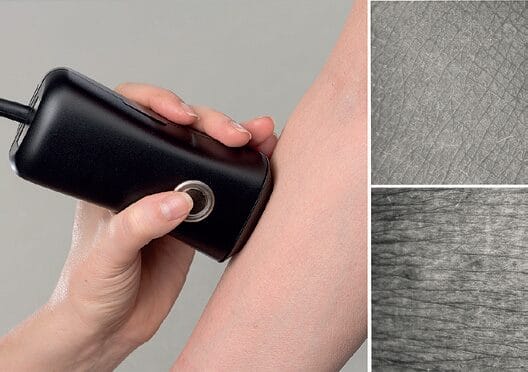
Depending on the nature of the product, additional methods can be useful, e.g. fluorescent-based cameras to monitor the acne bacteria development, systems to analyse dandruff and many, many more.
Economical and multi-talented devices allowing the assessment of multiple different parameters at the same time are particularly useful for all kinds of claims. An example is the Visioscan®, a special camera based on UV light to show detailed non-glossy, close-up images of the skin surface. On these images, topographic parameters such as smoothness, roughness, wrinkles, texture and anisotropy of skin lines can be calculated. At the same time, the camera can be used with special foils to analyse the sebum spreading in real time and the desquamation level of the skin. Spots, pores, scalp and nails can be monitored. Beard growth and the thickness and number of hairs after shaving can also be studied.
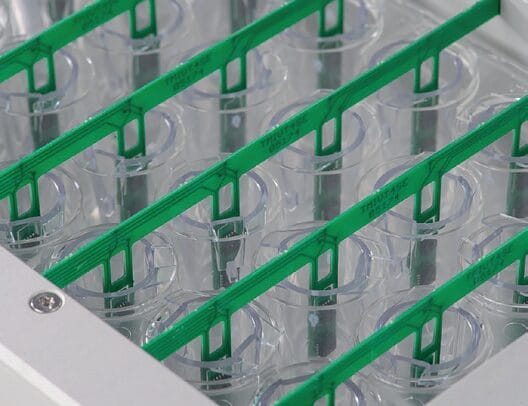
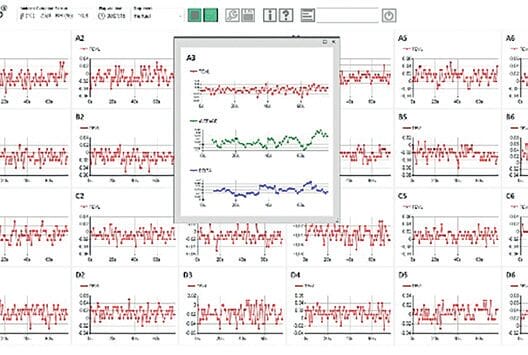
With such kind of equipment, many different parameters and body sites can be analysed in very little time. Some supported claims could be anti-wrinkle, anti-aging, smoothing, rejuvenating, anti-roughness, hydrating, against dry/scaly skin, exfoliating, clean shaving, against oily skin, anti-dandruff, anti-acne, cleaning/purifying, against imperfections, oil restoring, nourishing, rich, balancing, normalizing, pore refining/pore activity decreasing –there are virtually no limits.
Since animal testing has been banned for ethical reasons in most parts of the world, studies are increasingly carried out on artificial skin, skin equivalents and cell cultures. Those tests are economical (no ethics commission, no volunteers) and a perfect screening base for many safety and efficacy tests. On these substitutes, different parameters can be measured. Since disruption of the skin barrier will point to a sensitizing effect, especially the TEWL measurement is often used in pre-screening for product safety and tolerance. Measurement methods have been developed for the commercially available cultured skin sets, e.g. TEWL measurement on up to 24 cultured skin wells at the same time.
New methods to replace the notorious Draize-Test are also currently developed.
Since there are so many parameters that can be assessed by different and very new techniques, measurement methods can also serve to generate ideas and new claims around a product which may not have been obvious when starting its development. A recent, very unique system to assess mechanical parameters of the nail (e.g. nail hardness, elasticity, structural strength) for example, can help to develop innovative claims around hand- and nail care. Not many researchers were able to study those parameters in the past.
With well sophisticated equipment at hand for testing and screening the efficacy of cosmetics in-house in all development stages of the product, you can be sure that the product that you hand over to a CRO for the final external documentation is the very best you can do.
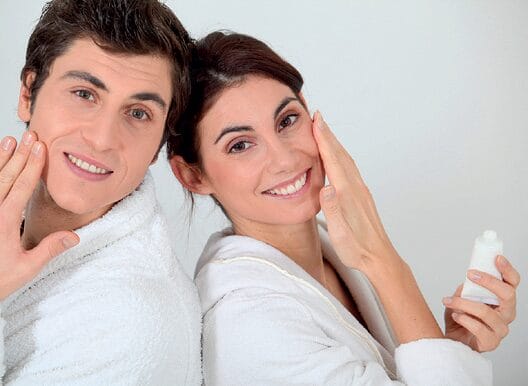
References
- Fluhr, J. W. (Editor): Practical Aspects of Cosmetic Testing – How to Set Up a Scientific Study in Skin Physiology, Springer 2011, ISBN: 978-3642-05066-4
- Pensé-Lheritier, A.-M. (Editor): Évaluation des produits cosmétiques – L’objectivation, Lavoisier, Paris, 2016, ISBN: 978-7430-2153-5
- Berardesca, E., Loden, M., Serup, J., Masson, P., Monteiro Rodriguez, L.: The revised EEMCO guidance for the in vivo measurement of water in the skin, Skin Research & Technology, 2018; 24: 351-358, doi: 10.1111/srt12599.
- Firooz, A., Zartab, H., Sadr, B. et al.: Daytime Changes of Skin Biophysical Characteristics: a study of Hydration, Transepidermal Water Loss, pH, sebum, Elasticity, Erythema and Color Index on Middle Eastern Skin, Indian Journal of Dermatology 2016; 61: 700, doi: 10.4103/0019-5154.193707
- Matsui, M.S., Pelle, E., Dong, K., Pernodet, N.: Biological Rhythms in the Skin, International Journal of Molecular Sciences 2016; 17: 801, doi: 10.3390/ijms17060801
- Mehling, A.: Chronobiology and rhythms of the skin, Skin Care Forum scf-online.com, Issue 40 – April 2006.
- Le Fur, I., Reinberg, A., Lopez, S., Morizot, F., Mechkouri, M., Tschachler, E.: Analysis of Circadian and Ultradian Rhythms of Skin surface Properties of Face and Forearm of Healthy Women, The Society of Investigative Dermatology, Inc, 2001, Vol. 117, No. 3, September 2001



